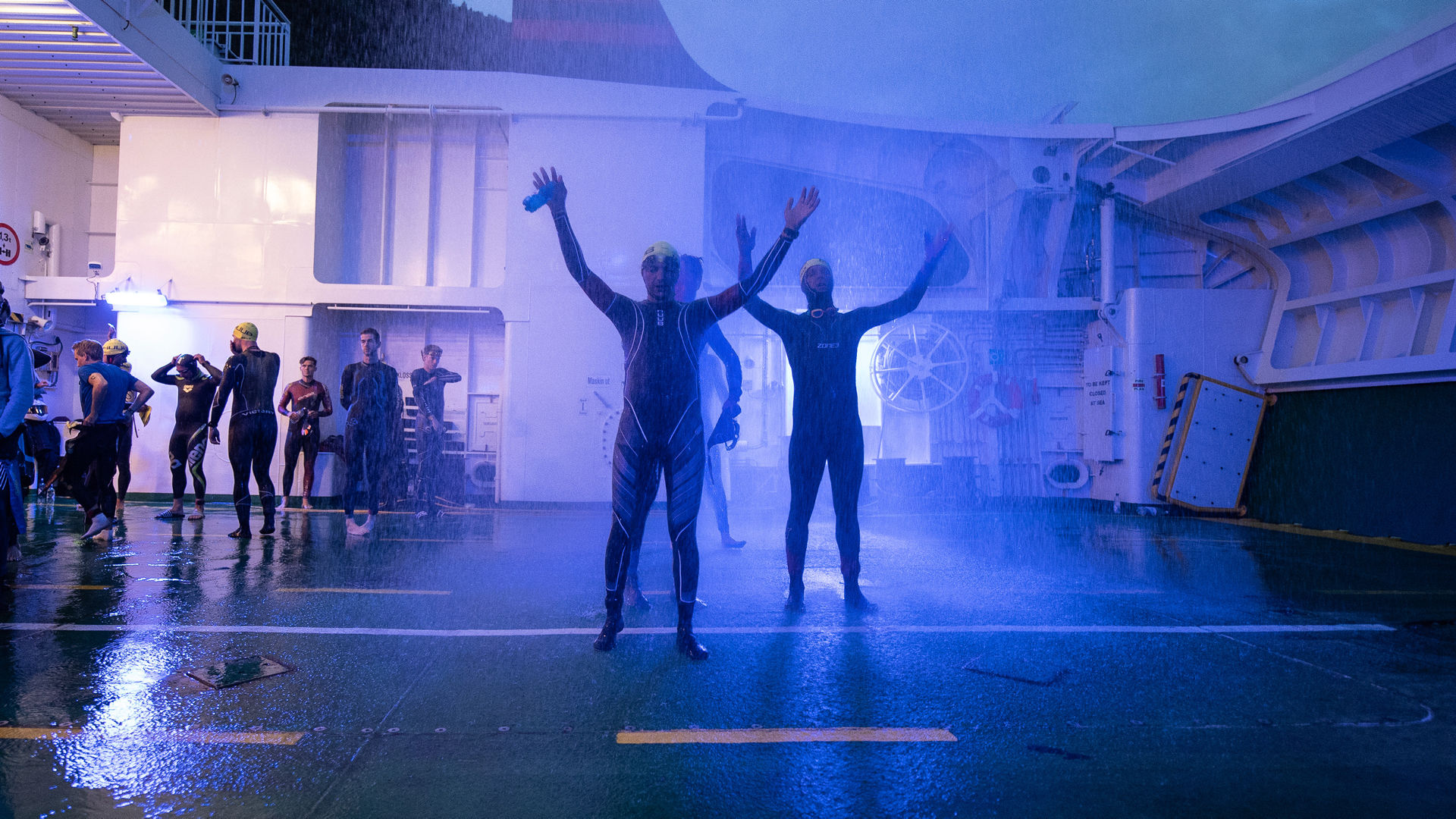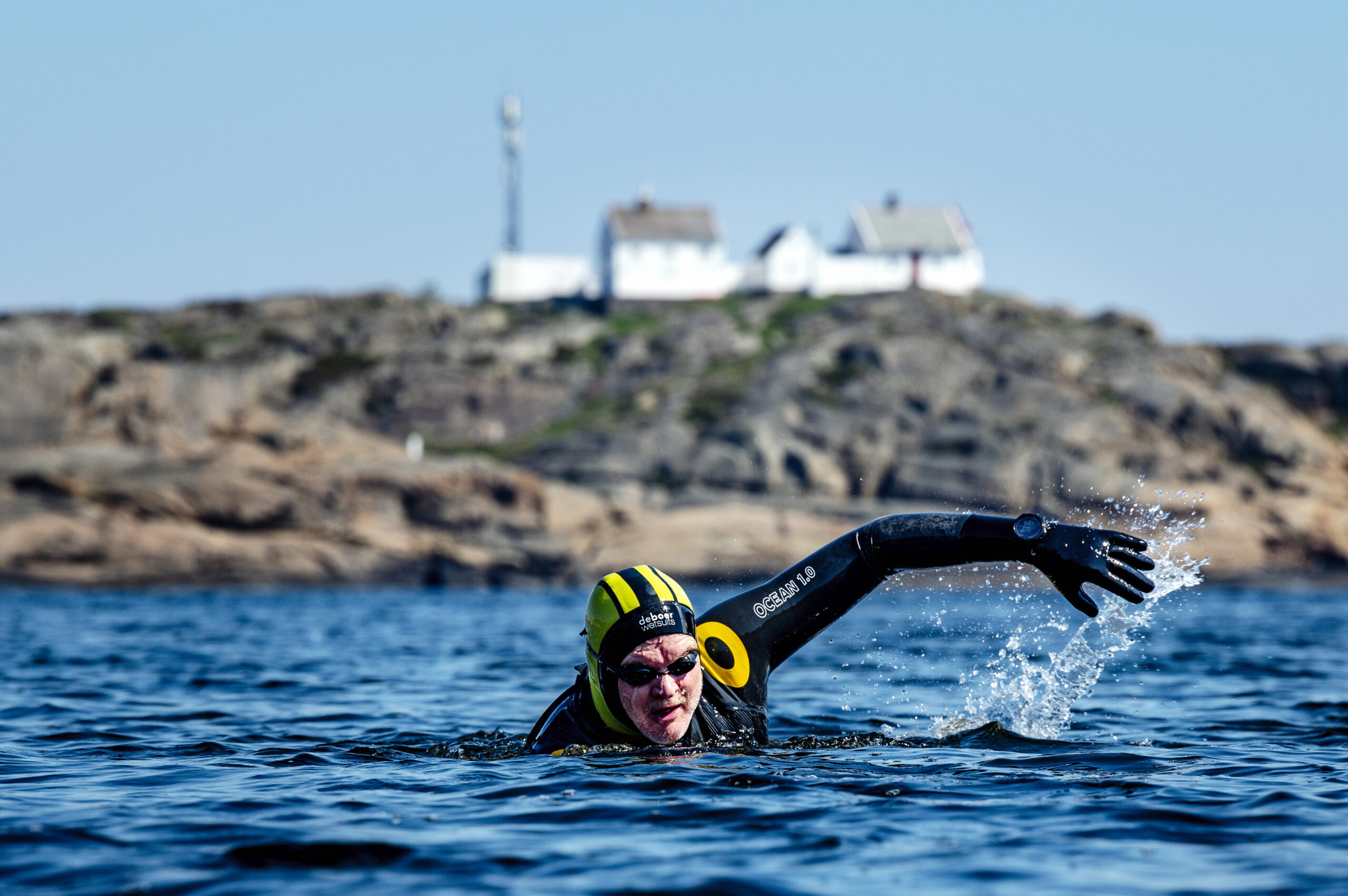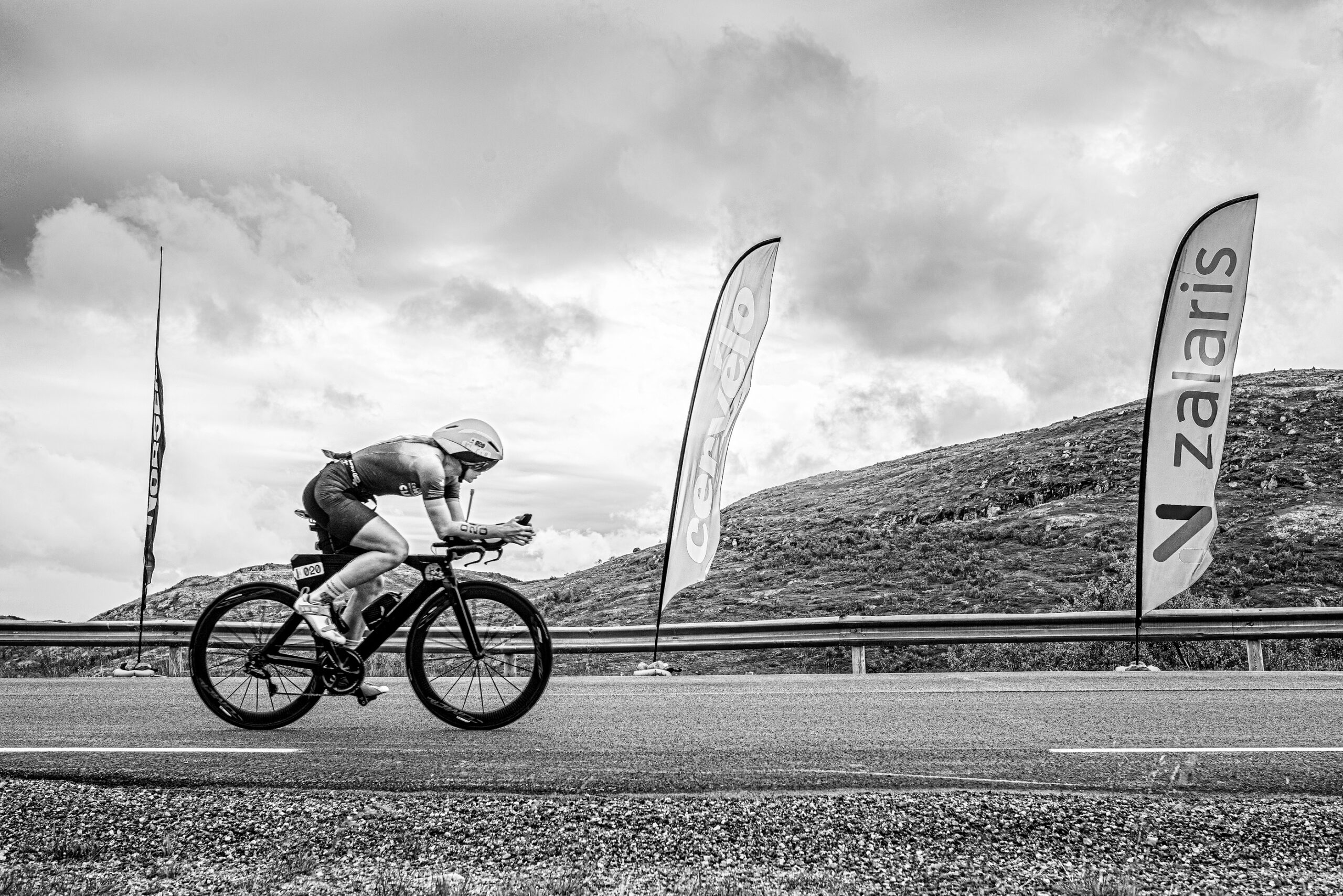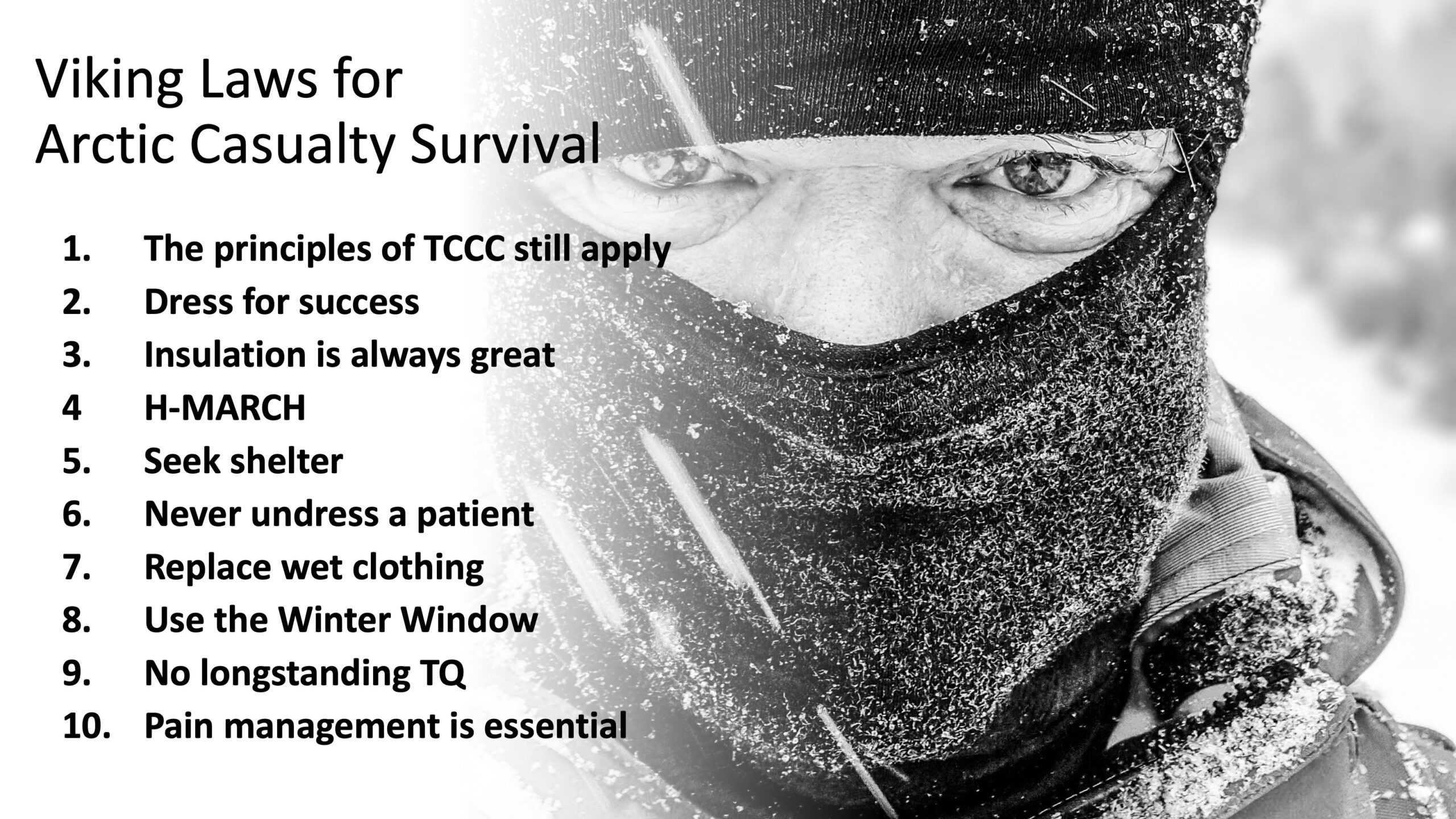The jump from the ferry in the Hardangerfjord is one of the most iconic happenings in Extreme Triathlons around the world. Have you ever wondered why we spray all Norseman athletes with ice-cold seawater before they jump? One of the reasons is to make cool pictures. However, as you might guess, this is by no means the most crucial purpose of the spray.
You might have heard about the cold shock response. And you might have heard about the diving reflex. Combining these two powerful reflexes – you have something called the Autonomic Conflict. It might be very dangerous for some people. And for Norseman athletes, it could have extraordinary significance.
The cold shock response is an initial response to cold water that includes elevated breath rate (hyperventilation), constricted blood vessels (vasoconstriction), elevated heart rate (tachycardia) and elevated blood pressure (hypertension). Tachycardia and hypertension give extra strain on the heart. With athletes jumping from the ferry, the strain on their heart is already elevated, possibly making the extra strain from the cold water shock dangerous. But probably worse is the risk of hyperventilation when jumping into the cold water. It decreases the maximum breath-hold time, gives uncontrolled gasping and increases the chance of aspirating water. And lastly, the cold water shock can cause heart attack due to the vasoconstriction, because vasoconstriction makes the heart work harder to pump the blood through the body.
The diving reflex is triggered by cooling and wetting of the face and especially the nostrils while breath-holding. The diving reflex has some opposite responses than the cold shock response. While the diving reflex also involves vasoconstriction and hypertension, it gives a lowered heart rate and also commonly some irregular heart rhythms (arrhythmia). The blood is redirected to vital organs, like the brain and the heart, to conserve oxygen. This is a physiological response, to make the body prepare to conserve oxygen during submersion. I have made a demonstration of the diving reflex here. Jørgen Melau demonstrating the diving reflex.
A few years back, British scientists described something they called the autonomic conflict. (Shattock and Tipton, 2012) It changed a lot about the way we think about drowning and cold water safety. In the Medical Team at Norseman, we take this into great consideration during preparation and safety management of the race.
The autonomic conflict is when two strong opposite responses occur at the same time, the cold shock response and the diving reflex. In this setting, the most important factor is that the cold shock response gives an elevated heart rate and the diving reflex gives a lowered heart rate. Simultaneous activation of these two responses is believed to give a raised probability of arrhythmias, and for some vulnerable individuals, this can be very dangerous.
So for the good news. This is very rare. And both you and I can do a lot to prepare.
You should prepare for a cold swim. We have discussed this in many details before, and we actually have a whole series of cold water swimming advises at the Norseman web. The science community supports us with several studies on cold water habitation. Habitation means that you can prepare your body to tolerate the cold. The habitation is important in many ways. Both for the physiology of your body. But it is also crucial that you are as fearless as possible while jumping from the ferry. You might not be protected by habituation if you experience high levels of anxiety on immersion. (Barwood et al., 2017) You are more prone to arrhythmias when you have a higher level of anxiety.
You should also know that we in the medical and safety crew care for this with the most elevated alert state. We consider the jump from the ferry as the most crucial part of the race, regarding safety. All crew are tuned into this moment with both awareness, as well as safety- and medical equipment.
So, why do we spray the athletes on the ferry?
The spray has several effects. One is that a possible reaction to the cold water from a vulnerable athlete comes on the ferry and not in the water. Having a serious incident on the ferry is far easier to handle than if it occurs in the waters. While we do have a very good readiness on the fjord, handling a severe incident in the dark and in the water is not easy. Secondly, it gives the athletes a feel for the water before jumping in. It reduces the impact of the cold shock response as well as reducing anxiety.
And it makes some cool pictures.
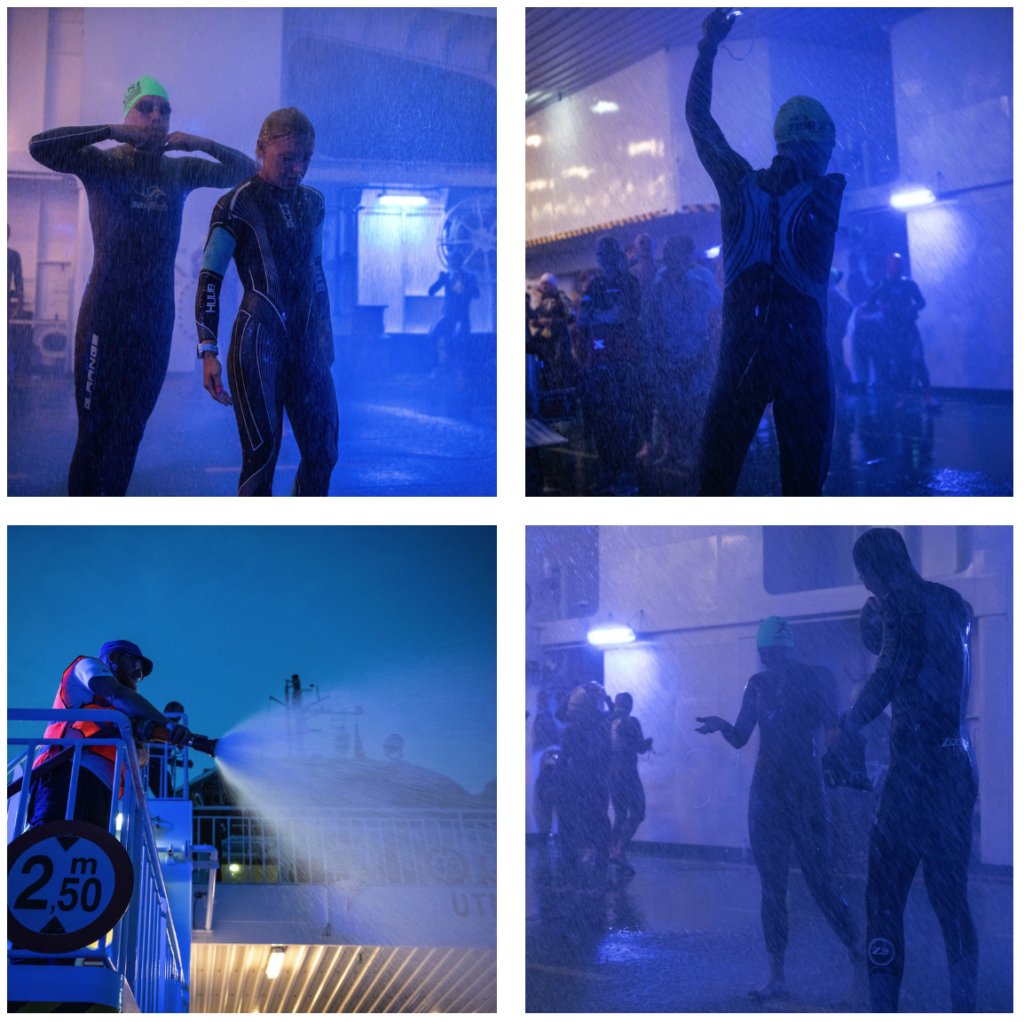
References
Barwood, M.J., Corbett, J., Tipton, M., Wagstaff, C., Massey, H., 2017. Habituation of the cold shock response is inhibited by repeated anxiety: Implications for safety behaviour on accidental cold water immersions. Physiol Behav. https://doi.org/10.1016/j.physbeh.2017.02.026
Shattock, M.J., Tipton, M.J., 2012. “Autonomic conflict”: a different way to die during cold water immersion? J Physiol 590, 3219–30. https://doi.org/10.1113/jphysiol.2012.229864
